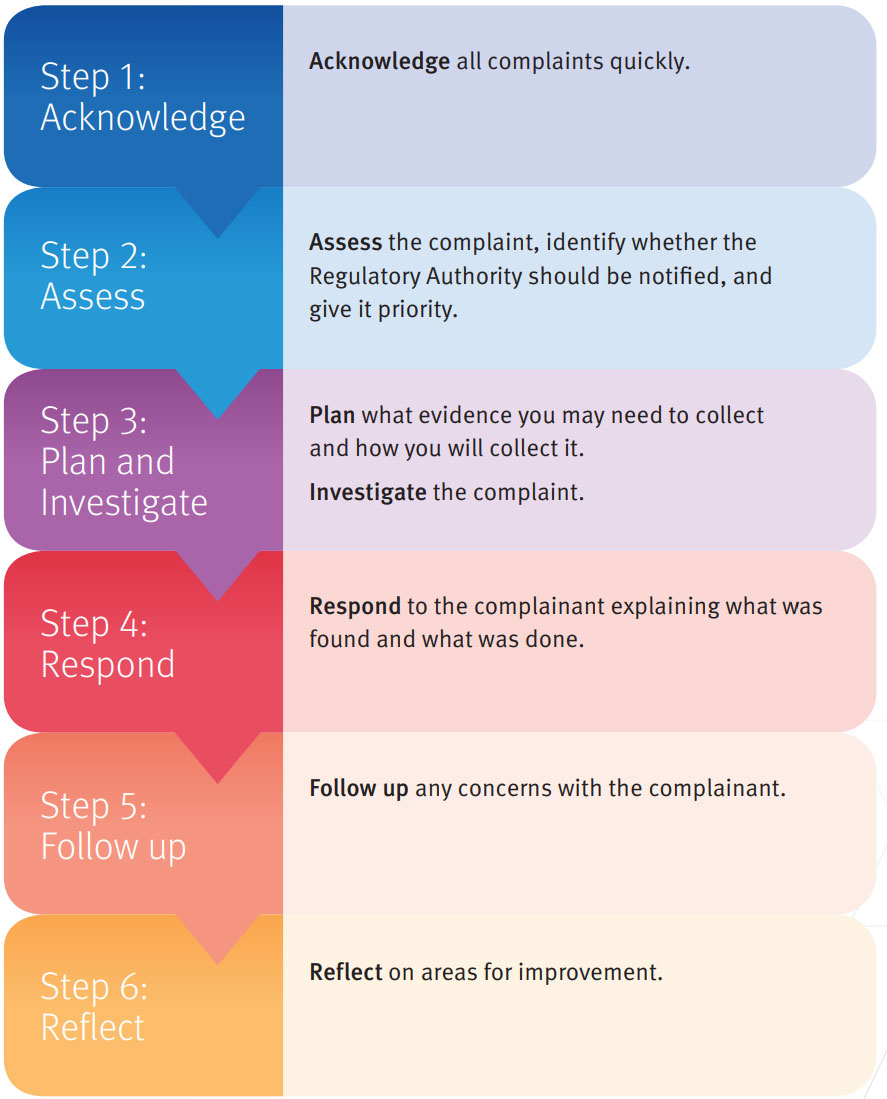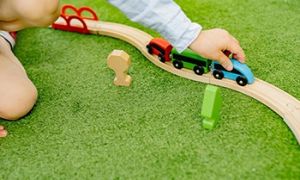There may be times when despite giving your best, your service might have to face complaints. However, instead of getting demotivated, it is possible to use complaints as opportunities for critical reflection. The following article provides information on Complaints Management, Positive Approaches To Complaints, Effective Complaints Management systems, Identifying Areas Of Improvement, Effective Documentation and more.
Complaints Management In The NQF
Services provided in accordance with the National Quality Framework must adhere to the Education and Care Services National Law (National Law) and the Education and Care Services National Regulations (National Regulations).
Several legislative regulations exist for the management of claims made in accordance with national laws and regulations. Utilising an efficient system includes administering a service, including complaints, and conducting self-assessments to inform quality improvement.
Early childhood education and care specialists must provide notice based on the nature of the complaint and in accordance with National Law, have provisions for mandatory reporting.

Positive Approaches To Complaints
For education and care services, having an open and accessible complaints management system is crucial, and it is also a crucial element of Quality Area Seven of the National Quality Standard. A complaint can be resolved within the service, avoiding the need to bring it up with the Regulatory Authority.
Effective processes for managing complaints can assist approved providers, nominated supervisors, and educators to:
- address minor issues before they become more serious;
- improve the quality of care being delivered; gain insights into the needs and wants of families and children;
- build positive relationships with children, their families, and the community
Effective Complaints Management System
A fair, accessible, responsive, and efficient complaints management system encourages service delivery to get better over time. A complaints management system has multiple separate phases.
The six actions listed below presuppose that a customer has already directly complained to your service.
Your service will be informed by the Regulatory Authority if the individual has complained to another party, such as directly to the Regulatory Authority, and may be expected to give information and proof to support their inquiry.
Some concerns can need an investigation into the problems raised.
A straightforward complaint, however, can be handled differently, such as by offering an apology, making a fast modification at the service, and informing the complainant that action has been made.
Throughout the procedure, regular communication with the complainant should be maintained. If the complaint is taking longer to address than initially anticipated, it is especially crucial to keep the complainant updated.
Identifying Areas Of Improvement
Continuous improvement is an essential practice for education and care services and is required by the National Quality Framework. Complaints and grievances can be used to identify an area in the service program, practice or team performance that is falling short of or harming children’s well-being.
To do this, the service should record all types of comments – positive and negative. These should be then used to draw up a factual picture of what is happening in the service and note any patterns and trends such as repeated playground injuries in children or a common unwillingness for a particular classroom activity.
Analysing such records over a period of time can help the service identify why problems may be re-occurring and where the root cause of a problem may lie. Such identification can then directly inform the Quality Improvement Plan so that the service can meet its goal of continuous improvement.
Managing Complaints Through Effective Documentation
Complaints and their management can be used in self-assessment documentation. An effective complaints management system is fair, accessible, responsive, and efficient and contributes to continuous improvement in service delivery. There are several distinct stages in a complaints management system like
- Acknowledge all complaints quickly.
- Assess the complaint, identify whether the Regulatory Authority should be notified, and give it a priority
- Plan what evidence you may need to collect and how you will collect it. Investigate the complaint
- Respond to the complainant explaining what was found and what was done.
- Follow up any concerns with the complainant.
- Reflect on areas for improvement
While steps 3 and 4 will require the service to actively collect and record evidence related to the complaint, if the entire complaint management process is properly documented, then it can form a valuable part of the self-assessment cycle of the service. Though the service is not mandated to document its self-assessment, it may be a good idea to do it to demonstrate to the regulatory authority, that the self-assessment has informed the development and review of the QIP.
Anticipating New Trends
A service can use feedback from parents to analyse emerging needs and priorities of the families and wider community, perhaps for a more culturally inclusive environment or teaching strategies that cater to spatial or kinaesthetic intelligence. Continuous review and update are an intrinsic part of any meaningful service philosophy and the service can use feedback to ensure that grievances about changing environment are used to achieve continuous improvement.
Both service providers and users gain from having an efficient complaints handling system. Staff members are supported in potentially emotionally charged circumstances by a well-managed and accessible system
.
When educating personnel and periodically reviewing complaints rules and procedures, approved providers and designated supervisors may want to refer back to this guidance.
It is important to view complaints as a chance to enhance service delivery.
Further Reading
Documentation Services Require To Support Quality Area 7 - The following lists the documentation services required to have in order to support the achievement of QA7 in each element.
Reflection Questions For Quality Area 7 - The following questions are to be used as a guide for reflecting on each of the standards within Quality Area 7. Use the information from these questions to recognize good practice or to change and improve what is not working well. It can also be used as part of a Self-Assessment or Quality Improvement Plan.
Turning Children's Weaknesses Into Strengths - As Educators when communicating with Parents (through verbal or non-verbal communication), there will be times when we need to discuss issues or concerns that may arise. The following article provides examples of turning children's weaknesses into strengths.
Talking To Parents About Their Child's Behaviour Issues - The following provides information for Educators on how to talk to parents about their child's behavioural issues.
References:
- Using Complaints To Support Continuous Improvement, ACECQA
- Guide For Effective Complaints Management, Departement Of Education, NSW







 As an Educator in Australia, your pay rate falls under the Children’s Services Award 2010. This award states the minimum amount that an employer can
As an Educator in Australia, your pay rate falls under the Children’s Services Award 2010. This award states the minimum amount that an employer can When working as a qualified Early Childhood Teacher (with a university degree) within a service, your rate of pay will come from the Educational Services
When working as a qualified Early Childhood Teacher (with a university degree) within a service, your rate of pay will come from the Educational Services When working as a Diploma Qualified Educator your pay rate is from the Children's Services Award 2010. This Award states your minimum rate of pay
When working as a Diploma Qualified Educator your pay rate is from the Children's Services Award 2010. This Award states your minimum rate of pay When working as a Cert 3 Qualified Educator, your pay rate is from the Children's Services Award 2010. This Award states your minimum rate of
When working as a Cert 3 Qualified Educator, your pay rate is from the Children's Services Award 2010. This Award states your minimum rate of Educational Leaders play a crucial role in their early childhood service by ensuring that the educational program aligns with best practices and supports the holistic
Educational Leaders play a crucial role in their early childhood service by ensuring that the educational program aligns with best practices and supports the holistic In early childhood education and care, ratios are more than a technicality—they are a frontline safeguard. Every child deserves responsive supervision, emotional connection, and developmental
In early childhood education and care, ratios are more than a technicality—they are a frontline safeguard. Every child deserves responsive supervision, emotional connection, and developmental Here’s a comprehensive Mobile Phone and Smart Watch Policy tailored for early childhood education and care (ECEC) services in Australia, aligned with the latest 2025
Here’s a comprehensive Mobile Phone and Smart Watch Policy tailored for early childhood education and care (ECEC) services in Australia, aligned with the latest 2025 With the new national child safety reforms kicking in on 1 September 2025, early childhood services like yours have a real opportunity to lead the
With the new national child safety reforms kicking in on 1 September 2025, early childhood services like yours have a real opportunity to lead the The Sea of Fish Challenge is a national initiative that invites children, educators, families, and communities to create and display fish artworks as a symbol
The Sea of Fish Challenge is a national initiative that invites children, educators, families, and communities to create and display fish artworks as a symbol Across the early childhood education and care sector, educators are sounding the alarm: current staffing ratios are insufficient to deliver safe, meaningful, and developmentally appropriate
Across the early childhood education and care sector, educators are sounding the alarm: current staffing ratios are insufficient to deliver safe, meaningful, and developmentally appropriate


